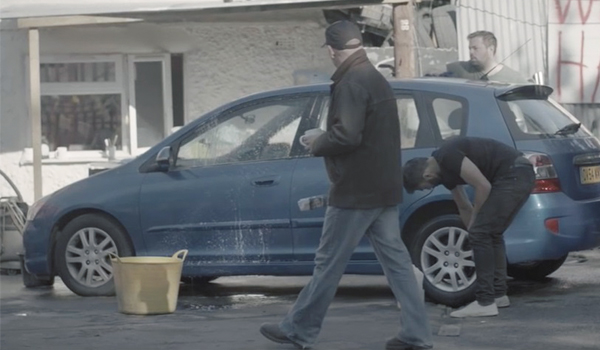Fighting the tide
Seth Cooke, a former Senior Intelligence Analyst and Business Intelligence Developer for Avon and Somerset Police and currently Technical and Tradecraft Subject Matter Expert at the i2 Group, outlines a swift, low-cost method by which police can identify offender misogyny in data that they already own, using i2 software that they already own.
Earlier this year, the National Police Chiefs’ Council (NPCC) released a National Policing Statement detailing the scale of Violence Against Women and Girls (VAWG) . The report details a 37 per cent increase in recorded VAWG-related crimes from 2018/19 to 2022/23, estimating that one in 12 women will be a victim of VAWG every year, and one in 20 adults will be a perpetrator. These figures were accompanied with a cautious caveat that many such crimes go unreported.
Deputy Chief Constable Maggie Blyth, Deputy CEO of the College of Policing and NPCC lead for VAWG, said: “Violence against women and girls is a national emergency. We need the support and direction of government to intervene and address the current problems within the criminal justice system and lead the way on a whole-system approach to VAWG.”
The National Policing Statement lists five key high harm threats that that comprise VAWG:
- sexual violence
- domestic abuse
- stalking
- Child Sexual Abuse & Exploitation (CSAE)
- online and tech-enabled VAWG
Relevant to each of the threats is the victim’s experience of the offender’s overtly expressed misogyny, experienced as an aggravating factor at the time of an offence. I can share with you here the method I used to identify offender misogyny while working for Avon and Somerset Police.
From 2015 to 2018 I was an Intelligence Analyst, then Senior Intelligence Analyst, for Avon and Somerset Police. I was strategically, tactically and operationally aligned to the Hate Crime thematic. Thank you to Sarah Crew, Chief Constable of Avon and Somerset, for allowing me to share findings relating to the identification of offender misogyny from my 2016 Hate Crime Problem Profile.
The purpose of sharing is to describe the method by which police can identify offender misogyny in data that they already own, using i2 software that they already own. Any constabulary can adopt the method in a manner that is swift and low-cost to cost-neutral.
The identification of offender misogyny is important – as the words spoken by the offender, at the time of the offence, are deeply tied to the victim’s experience of many crimes covered by the five key high harm threats mentioned.
In the Problem Profile, I recommended that gender be considered for local recognition by Avon and Somerset Police as a Hate Crime category, and that by doing so we might influence the national direction to do likewise. Local adoption of this recommendation would direct colleagues to record misogynist speech as an aggravating factor and apply the same investigative rigour as they would any other type of Hate Crime. National adoption in law would allow misogyny to be included as an aggravating factor in sentencing decisions.
In October 2017, Avon and Somerset became the third force in the country to locally recognise gender as a Hate Crime. In April 2023, the UK Government decided against national adoption.
The analysis of offender misogyny in Avon and Somerset Police data
Keyword reporting was used to produce a dataset for analysis. The selected keywords represented common gendered pejorative terms used to describe women and girls, reported by the victim, witness or person reporting, as having been spoken by the suspect at the time of the offence. The full method and keywords used are detailed in the next section of this article, for any constabulary that seeks to put this approach into practice.
The following findings were published internally to Avon & Somerset Police in 2016:
In current UK legislation, five classifications of hate crime are nationally recognised – race, religion, disability, sexual orientation and transgender identity. Under that fivefold model, in 2016, racial hate crime accounted for 74 per cent of all reported hate crime in Avon & Somerset data.
If gender were locally recognised and recorded as a sixth classification of hate crime, it would account for 41 per cent of all reported hate crime – just below racial hate crime, which would account for 43 per cent. This is based on the number of reports containing misogynist pejorative terms targeted at the victim, compared with crime reports tagged with a racial hate classification.
86 per cent of the reports containing misogynist language were already classified as ‘notifiable crimes’. This means that Avon and Somerset were already dealing with the majority of these reports as a crime, just without the recognition of misogyny as an aggravating factor. Adopting gender as a locally recorded hate crime classification would therefore not immediately produce a large increase in police demand. While the types of notifiable crimes featuring misogynist language were predominantly similar to the five recorded classifications of hate crime – mainly public order and harassment, alarm and distress offences – six per cent of the reports were markedly different in character, including domestic abuse and sexual offences. Misogyny is therefore measurably similar to the five officially recognised classifications of hate crime, and where it differs, it remains relevant to VAWG.
The recommendation to record gender hate crime sought to improve reporting by women and girls. Based on the five existing classifications of hate crime, 57 per cent was reported by males and 43 per cent by females. This is likely caused by under-reporting from women and girls (excluding non-binary and transgender identity, data for which was insufficient to make analytical judgement). In the context of the identified prevalence of misogynist abuse, the leading hypothesis was that women and girls were likely to under-report hate crime because gender-based abuse was normalised for them while under-recognised by society. If victims did not feel they were taken seriously as abused women and girls, would they anticipate being taken seriously as victims of racist or ableist abuse? Long-term, the recommendation to recognise gender aimed to address female under-reporting of hate crime in general, and potentially contribute to a culture of increased reporting by women and girls across all crime types. It was therefore anticipated that police demand would increase steadily rather than suddenly.
Women and girls were less likely than men to report hate crime committed by strangers, away from their home – but more likely to report when it took place at home or close to their home, or when committed by neighbours. Females were 5.4 per cent less likely than males to report hate crime committed by strangers, and 4.5 per cent less likely to report when it took place away from the home. However, they were 12.1 per cent more likely to report hate crime at home or close to home, and 6% more likely to report when the suspect was their neighbour.
The leading hypothesis was that if gender-based abuse was experienced as normal for women and girls, then risk assessment was also likely to be normal for them. A stranger, away from home, might be unlikely to be identified, unlikely to be encountered again, and the offence unlikely to be prosecuted. Abuse impacting the quality of home life, by a known suspect or neighbour, however, might become intolerable, and therefore more likely to be reported. The tendency of women and girls to nurture close support networks of friends and family was also considered. If women and girls do not feel as though they are taken seriously, they may be more likely to cope with victimisation laterally through these support networks. Meanwhile, men lacking these networks might be more likely to report vertically, through appeal to a legal authority that they expected to follow up on their report.
Anticipated counter-scenarios were also considered. Firstly, while a small number of the incidents featured female suspects abusively using the terms, upon reading each report the language remained gendered in its application and was intended to be received by the victim in that manner. A second anticipated counter-scenario was that some of the terms had also come to be used against men. On the surface, this seemed confirmed by nine per cent of reported cases. Upon reading these reports, they were from male victims reporting two offences at once. The first was against themselves, which was recorded. The second was against a female partner, family member or friend, which featured the abusive term but was not recorded as a separate offence. A third scenario was anticipated but not encountered; that the language under analysis had been reclaimed by feminists. Reclamation reverses the polarity of oppressive language, delegitimising the continued use of that language by the oppressor. This was not found in the data.
This evidence base, alongside the voices of partner organisation and advocacy groups, contributed to Avon and Somerset’s decision to adopt the recommendation to recognise gender hate crime.
Tradecraft: how to identify misogynist language in police data using i2
Across the three constabularies I worked for – Hampshire, West Yorkshire, and Avon and Somerset – the terms “bitch”, “slut”, “slag” and “whore” were frequently reported by victims and witnesses as having been used by the suspect against the victim. These gendered pejoratives became the keywords I used for analysis. While these terms are typical, constabularies may encounter a wider variety, different, or new terms.
Linguistic analysis in police data is not always straightforward. Chief Constable Sarah Crew (Assistant Chief Constable, then Deputy Chief Constable at the time of the analysis and decision to record gender) taught me the importance of understanding data through the lenses of People, Process, Systems and Culture. These categories were used to assess reporting opportunities in text data sources:
Intelligence reports: Intelligence is proactively collected in accordance with strategic, tactical and operational intelligence requirements. As the culture had not yet accepted misogyny as an aggravating factor at the time of my analysis, police officers and staff submitting intelligence reports were unlikely to record these terms.
Crime logs of enquiry: Many ranks and roles of police officers and staff write in logs of enquiry. These can include:
- investigative plans, progress and review
- risk assessments
- victim and witness updates
- accounts of partnership liaison
- research overviews of previous crimes and incidents
- and many other types of update
The complexity of this context risked producing false positives.
Command and control logs: A relatively small number of police officers and staff write in command & control logs, producing a homogeneity of language. Many such systems constrain updates to a character limit, encouraging the culture of brevity required for radio updates in urgent situations, with the secondary gain of constraining the context within which a word may appear. Call handlers are typically instructed to type the reported speech of the person reporting.
Command and control logs were therefore found to be the best source for identifying reports of misogynist language. Many result in a notifiable crime, affording an analysis of victim and suspect demography from the corresponding crime report. Victim and witness statements are also a rich source of reported speech with a high degree of relevance to the crime to which they are attached.
The i2 software already owned by all UK constabularies includes several capabilities for this kind of keyword reporting, as well as other technologies for linguistic analysis:
- i2 repositories such as iBase and the Information Store provide a simple visual interface for creating, saving and reusing keyword queries that incorporate complex Boolean logic.
- i2 repository features such as Search360 and Quick Search deliver results that exactly match, sound like, are synonymous with, or are spelling variants of the search term.
- i2 repositories can store attached documents, or extract their contents, allowing victim and witness statements to be searched and queried using the aforementioned capabilities.
- An i2Analyze server allows you to query to almost any data source, via API or RDBMS connectors, including online sources for Internet Intelligence and Investigations.
- i2 TextChart provides natural language processing capability that automates the extraction of value from unstructured text, accelerating time-consuming research tasks.
While these capabilities address language, there is much more that can be done using i2 to support investigation and analysis for VAWG.
What else can i2 do to support you?
While this article focuses on the identification of misogyny as an aggravating factor, i2’s national agreement with UK police provides access to many other capabilities that can address VAWG:
- Network analysis in i2 is a powerful tool for investigating child sexual abuse and exploitation. Contextual Safeguarding teaches that risk enters a child’s life through their peers and associations. Social network analysis can quantitatively assess this risk, and visually depict the social proximity of high threat harm risk individuals to vulnerable children.
- i2’s open architecture delivers a huge array of capabilities for Internet Intelligence and Investigation (III, referred to as OSINT outside the UK). i2 Analysis Studio can connect to almost any online data source via API; Python coders can build bespoke ways of working using our Data Science Toolkit; and i2’s partners use our Software Development Kit to build new III/OSINT capabilities.
- i2’s III/OSINT and digital forensics partnerships include a new integration with Securium Safeguard, which automates the detection of coercion, grooming and exploitation in high-volume chat logs. A Detective Inspector from Merseyside said: “I did not identify a single victim in two hours – Securium identified 46 potential victims in 5 minutes.”
- i2’s repositories can enrich your data – allowing you to investigate any data source. Deliver new capabilities for investigating sexual violence, domestic abuse, stalking, Child Sexual Abuse and Exploitation (CSAE), and online/tech-enabled VAWG – in data that you already own, or data obtained from third parties.
i2 is a signatory to the UK Police Industry Charter. We welcomed the Charter, as it already aligned to our existing principles:
- an open architecture, integration-ready, interoperability first approach
- operationalisation through clarity and explainability, compatible with a Maximum Transparency by Default (MTBD) ethos
- enabling our customers and partners through capability transfer and training, and
- delivering solutions through a culture of close collaboration.
Any i2 technology that delivers new capabilities to address VAWG will be deployed and operationalised according to these principles.
i2 welcomes contact from Constabularies who want to discuss how to deploy your existing software investment to best address VAWG. Please email Seth.Cooke@i2group.com if you would like to express interest.





